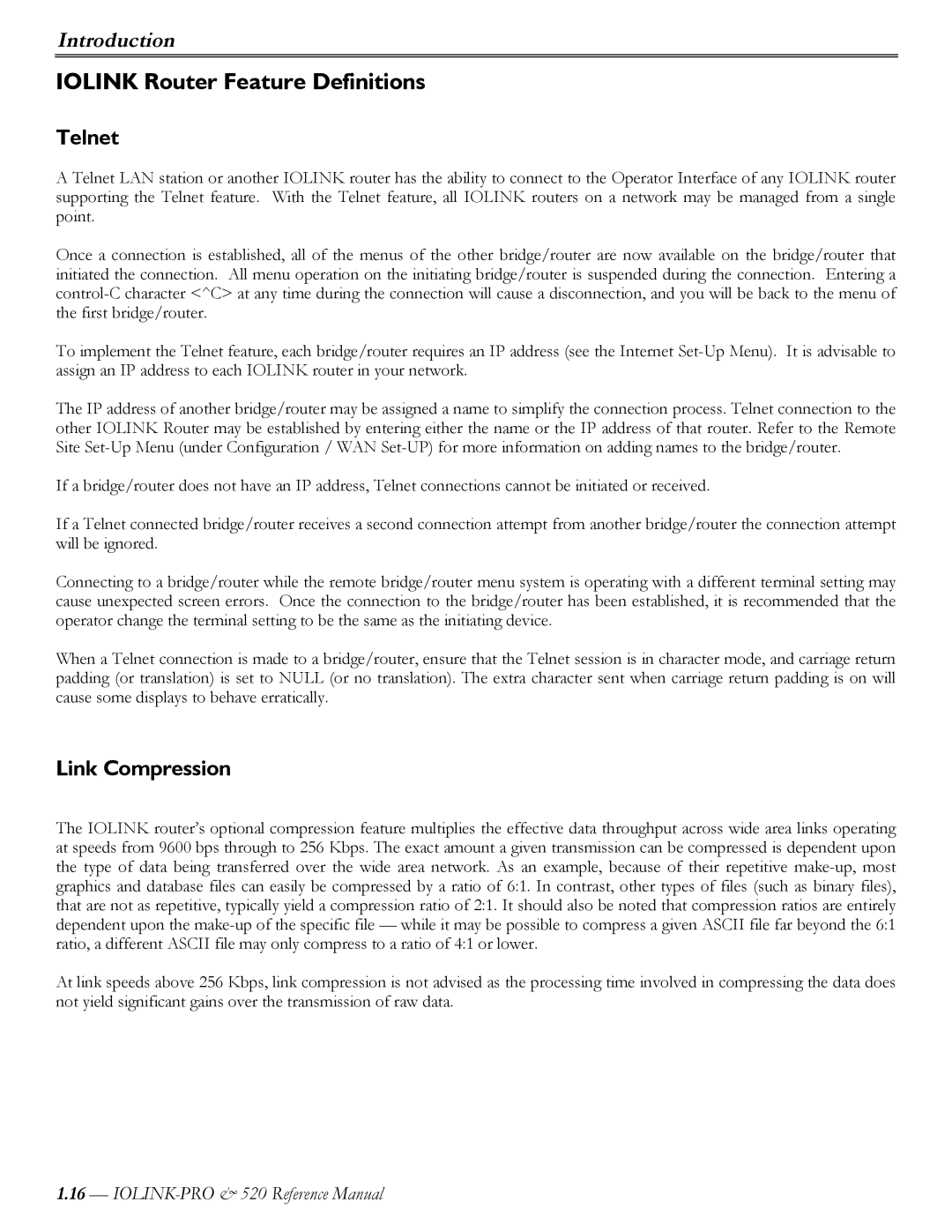Introduction
IOLINK Router Feature Definitions
Telnet
A Telnet LAN station or another IOLINK router has the ability to connect to the Operator Interface of any IOLINK router supporting the Telnet feature. With the Telnet feature, all IOLINK routers on a network may be managed from a single point.
Once a connection is established, all of the menus of the other bridge/router are now available on the bridge/router that initiated the connection. All menu operation on the initiating bridge/router is suspended during the connection. Entering a
To implement the Telnet feature, each bridge/router requires an IP address (see the Internet
The IP address of another bridge/router may be assigned a name to simplify the connection process. Telnet connection to the other IOLINK Router may be established by entering either the name or the IP address of that router. Refer to the Remote Site
If a bridge/router does not have an IP address, Telnet connections cannot be initiated or received.
If a Telnet connected bridge/router receives a second connection attempt from another bridge/router the connection attempt will be ignored.
Connecting to a bridge/router while the remote bridge/router menu system is operating with a different terminal setting may cause unexpected screen errors. Once the connection to the bridge/router has been established, it is recommended that the operator change the terminal setting to be the same as the initiating device.
When a Telnet connection is made to a bridge/router, ensure that the Telnet session is in character mode, and carriage return padding (or translation) is set to NULL (or no translation). The extra character sent when carriage return padding is on will cause some displays to behave erratically.
Link Compression
The IOLINK router’s optional compression feature multiplies the effective data throughput across wide area links operating at speeds from 9600 bps through to 256 Kbps. The exact amount a given transmission can be compressed is dependent upon the type of data being transferred over the wide area network. As an example, because of their repetitive
At link speeds above 256 Kbps, link compression is not advised as the processing time involved in compressing the data does not yield significant gains over the transmission of raw data.
1.16—
